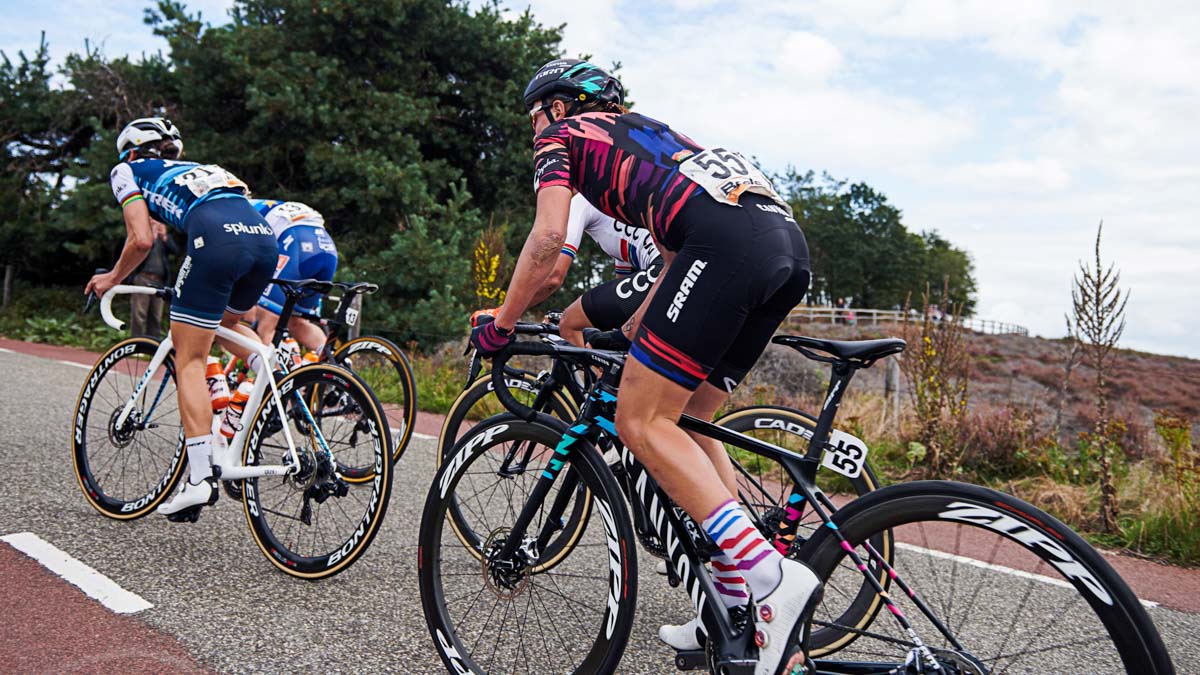There was no fixed plan that could have accounted for all of the twists and turns that 2020 took, and still none to take us into this year’s racing season — whatever that will look like. But you have goals, and you still want to grow and improve as an athlete. So what can you do if you’ve been following a plan that just isn’t helping you achieve those aspirations?
With a greatly altered 2020 racing season and ongoing uncertainties about this year’s racing season, now is a good time to consider (or re-consider) the value of hiring an endurance coach to help you answer that question.
First, let’s start with a foundational description of what an endurance coach does. Generally speaking, a coach helps an athlete prepare for their optimal performance, through strategic training, analysis and insights, accountability, and support. Usually, all of this is geared toward a specific event – you know, like a race.
But, when the “event” part of that description drops out, is there still a role for a coach?
After several months of coaching through this pandemic, canceled races, hectic lives, and frazzled nerves, my answer is an enthusiastic YES! In fact, I’m going to argue that a coach is even more important right now. Let’s cover the key benefits of working with a coach so you can decide what is right for your journey.
Strategic Planning
This benefit is likely what you immediately think of when you imagine an endurance coach: someone who writes a training plan for you to follow. This is a key piece of what a coach does, so we’ll start here.
How you train is directly influenced by what you want to achieve, and why you want to achieve it. Many times, we tie those goals to a specific event, such as a race, but working towards your goals doesn’t need to be put on hold just because we don’t know what the 2021 racing season will look like.
We will race again, whether this year or next. So, the training you do now will support your future growth as an athlete. Races are not the days that make us better athletes. Rather, races are one point in a fulfilling journey of consistent and daily hard work. How do you structure training when you don’t have a traditional milestone? Enter the coach!
While the specifics of the approach each coach takes will differ, best practices in coaching include a two-prong process in developing an athlete’s training. The first step is the creation of an ATP, also known as an athlete training planner or annual training planner. This is a long-range view of your season or year, which allows the coach to plot out key training objectives that you will work toward during different blocks of training within that big chunk of time.
The second part of this process is translating the ATP to weekly training cycles, using both the strategic planning laid out in the ATP, as well as the ongoing analysis of the metrics and feedback you provide (more on analysis in the next section).
Now, to be clear, if you use a static training plan from the internet or a book, it is very likely developed with the same general process — an overall season outline translated to the details of weekly training. However, that plan is usually geared to a singular event. More importantly, it’s not built specifically for you, and it can’t be responsive to your progress as you move through the training. If you improve quickly, the plan cannot account for that. If you fall ill or need to miss some training, again, the plan cannot account for that.
A coach CAN make those strategic adaptations in ways that work for you. A good coach engineers a responsive and dynamic training schedule that fits your life—not one that fights it. Even before COVID-19, all of the athletes I coached found it challenging to make a static plan work for their lives, their skill-set, and their goals. COVID hasn’t changed that — it’s just made it much more obvious.
Analysis & Insight
This is where I spend most of my time as a coach: 1) reviewing training metrics, 2) explaining insights gleaned from the data and workout feedback, and 3) teaching athletes broader insights about their bodies and their sport.
A coach is a teacher who will help you become a better student of your sport. Before I became a coach, I was a university professor for 15 years. I see many parallels between what I did in the classroom, and how I work with my athletes. Every athlete deserves a coach, and you don’t need to be experienced or “fast” in order to get support in your training. In fact, a coach may be most helpful for the athletes with the most to learn!
For those who are new to endurance sports, a coach can drastically cut your learning curve by pointing out common missteps and how to avoid them. For those with more years of experience, a coach can help you understand how to maximize your available training time, based on the insights we find as we analyze your previous training. While we make a lot of improvements as beginners, those gains may be harder and harder to find as we get better. A coach knows where to look to help you find that next level in your performance.
For all athletes, analysis can also help reduce injury risk by tracking metrics that indicate when rest and recovery are more important than pushing through. A coach can also conduct a form analysis, and prescribe strength and drills to work specifically on your imbalances. Remember, that your coach doesn’t have to be local! Form analysis can be conducted via video.
Accountability
We all have days when we just don’t want to — and in the middle of a global pandemic with a season of racing in flux, those “don’t wanna” days have probably increased for many of us. A coach is someone who can remind you of your “why,” show you your progress using training benchmarks, and encourage you to keep going, no matter what obstacles appear before you.
The accountability a coach provides can be especially helpful when there is no race as the reward at the end of your training. But, races are not the only way to benchmark your progress! For example, at No Limits, we’ve created a series of team challenges (including our Fall #ChooseYourOwnAdventure series) and a virtual race series to help our athletes stay on the journey towards their goals.
One of the mantras of our team throughout this period has been: Our goals cannot be canceled! As long as you keep a strategic focus on the path forward, your goals don’t need to be canceled either. A coach will help you make sure of it!
Community
This may vary by coach, and not all coaches offer a team or community. Coached teams may be primarily in-person or mostly online. In either case, most teams have an element of both, but they may emphasize one over the other.
For example, the No Limits team is supported through:
- Private Facebook group
- Weekly indoor training sessions via Zoom and Zwift
- Weekly newsletters
- Monthly team meetings (via Zoom)
- Team events, such as virtual challenges, virtual races, and the like
- Team Races with pre-race breakfast and spectating/coaching
- Team gear
While every coached team will have differences in terms of the details, this gives you an idea of the type of community you may get when you sign on with a coach. If being part of a team is important to you, ask the coaches you interview how they develop a team environment, whether in-person or online.
Communication
At the center of all of these benefits is communication. Communication between the coach and athlete builds the relationship, trust, and connection. It also allows your coach to explain the strategic plan, teach you what the metrics mean, convince you to stay accountable to your goals, and connect with other like-minded athletes. I believe this is the center of what a coach does, and through our communication you’ll be able to learn, grow, achieve, and thrive.
Coaching athletes through a global pandemic has been a challenging but rewarding endeavor. Together, athletes and coaches are learning how to navigate the new normal, and finding great new ways to keep pushing our limits.







